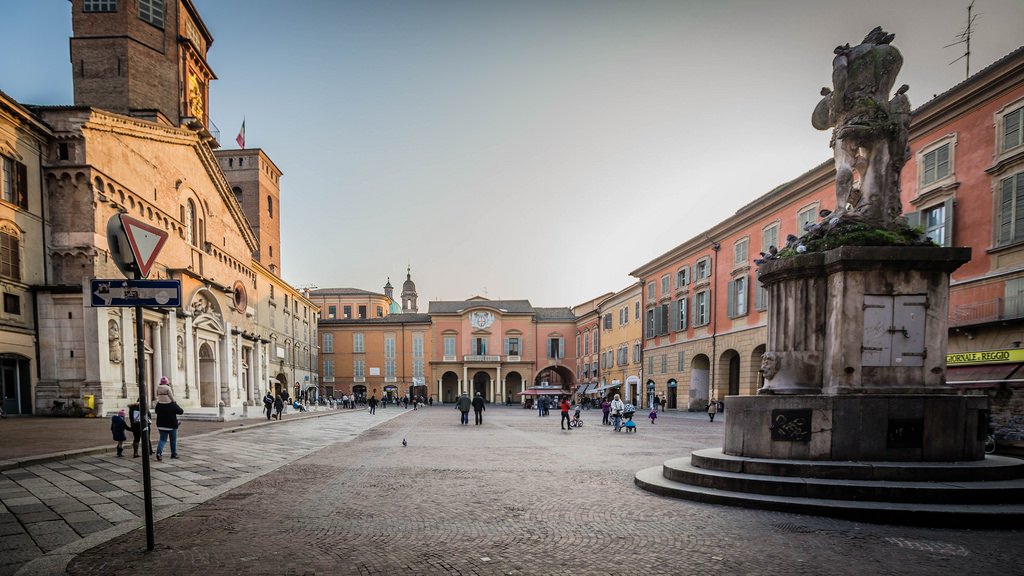What is the “Reggio Approach”?
The Reggio Approach is based on six pillars:
- The image of the child
- The expressive arts
- Progettazione
- The triangle parent-school-child
- The Environment
- Teachers as learners
Even though they can be considered separately, they are all generally interrelated.
The Image of the child
The child is seen as subject of rights rather than needs. As such, children are active participant in their own learning.
The kid carries knowledge and creates himself knowledge: thus is fundamental to let him free to interact with the surrounding environment, to listen his thoughts and his reflections, to understand it and to stimulate the learning process of his interests. The kid is the main character of the learning process, adults just have to give guidance and support this.
Kids learn in a spontaneous and natural way. The will come to know the world by direct personal experience, taking actions, verifying things, seeking confirmations or rejections.
The expressive arts
A central role is given to expressive arts as they will stimulate the emotional expression of children and their creativity and imagination. Activities like painting, drawing, sculpture, acting, dancing, music, pottery and puppetry are part of the daily agenda. A dedicated area for arts is available in all Reggio school, named atelier.
All eight areas of learning are explored: Musical–rhythmic, visual–spatial, verbal–linguistic, logical–mathematical, bodily–kinesthetic, interpersonal, intrapersonal, and naturalistic.
Progettazione
The word “Progettazione” comes from Italian and literally means “to design”. This is another way to define the curriculum, which it is created (i.e. “designed”) listening to children and it’s based on their interests and ideas. Children are encouraged to develop, with the guidance of the educators, many different projects: a theatre play, refurnishing the classroom, the study of a plant, re-arranging the garden, etc. Educators and teachers serves as “tools” for the children in case of help or in case of need for experience. Lot of emphasis is put into the relationship between the child and the teacher, which is based on love and trust.
The learning progress is constantly followed through daily documentation (photos, videos, transcript of conversations, etc). This material is shared and discussed by teachers and it is the way the curriculum is built, customized to the children. Also, the collected documentation is shared with families to make them understand more how their kid is progressing.
Documentation is an act of Love, a way to maintain the relationship with children, families and teachers.
The triangle parent-school-child
Parent’s participation is one of the most distinctive features of the Reggio Emilia approach. Parents have the right to participate actively in the growth, care and development of their children who are entrusted to the school. As such, parents are one of the three cornerstones of the triangle parents-school-child.
At a practical level, participation can take place in many different ways. For example, parents will be encouraged to contribute to maintenance of the building, gardening, repairing furniture, paint surfaces and equipment, build toys, etc.
Moreover, parents will be constantly involved in their kids learning progress through the sharing of the documentation (photos, videos, transcripts of conversation,etc.) taken by our educators.
The environment
School shall be a liveable place, where to build relations, do research, reflect, learn and, above all, a place where to feel good. A place where establish an equilibrium between teachers and kids, kids and families, families and teachers. Reggio schools feature connecting spaces that flow intone another and all rooms open to a big common area called Piazza (from Italian, “square”). The environment, in few words, reflects two of the most important principles of the Reggio Approach: collectivity and participation.
Walls are usually white and room are bright. No Reggio School will ever look the same at the end of a school year, the environment transforms thanks to the children, parents and teachers contribution.
Teachers as learners
Teachers professionally develop themselves not by a better understanding of teaching, but by improving their understanding of how children learn. Having such approach to education, teachers aim to grow along with the kids. The inputs they receive from kids shall be analyzed by them to propose new ideas and new developments (i.e., the design of the curriculum, see “Progettazione”).
Teachers will observe, ask questions, guide through suggestions. Teachers will work on documentation so that:
- Kids will have visual memory of what they did;
- Teachers will keep track of progress of the learning process in order to bring new ideas;
- Parents will be updated on the latest developments of their kids learning process.
Historic background

Main square in Reggio Emilia
Reggio Emilia is a prosperous town located in the north of Italy. Its strong cultural heritage, historic architecture and beautiful squares make the town a little gem for the visitors. However, when talking about Reggio Emilia, one cannot forget to mention the strong tradition of cooperation and inclusion that cuts across social and economic boundaries. The education of Reggio schools is a perfect example of this way of life.
This “Reggio Experience” started in 1963 with the first public school opened in Reggio Emilia and the successive 33 opened in the following years. A long experience which isthe result of a strong willingness from common people and from the politicians to invest in the childhood education , together with Reggio Emilia municipality, Loris Malaguzzi (pedagogue and father of this experience) and many teachers and educators who believed in the idea of the child as a subject of right, someone who is competent since his birth.
This experience gave birth to “Reggio Children”, a LLC company started because of the willingness of Reggio Emilia municipality in order to manage the growing global interest about this Reggio Approach.
As a result of the excellence of the approach, many awards have been bestowed:

Valli Theatre
- LEGO Prize to Loris Malaguzzi “for his outstandingwork in the field of early childhood education” (Denmark, 1992)
- Kohl Foundation Award to Reggio Schools (USA, 1993)
- Hans Christian Andersen Prize to Reggio Schools (Denmark, 1994)
- Klods Hans Prize to Reggio Schools “for commitment to the defence and development of children’s right in the field of education” (Denmark, 2000)
- City of Blois Prize to Reggio Schools “in recognition of the quality of the educational experience” (France, 2001)
- Gold Medal for Merit in schools, culture and art in to Reggio Schools “in memory of Loris Malaguzzi” (Italy, 2001)
- Nonino Prize for an Italian Maestro of our times to the educational project for early childhood (Italy, 2002)
Another significant event which deserves to be mentioned is the opening of the International Centre of Childhood “Loris Malaguzzi” in Reggio Emilia, a place for the defence and promotion of the rights of children.
For more information, visit the Reggio Children website

